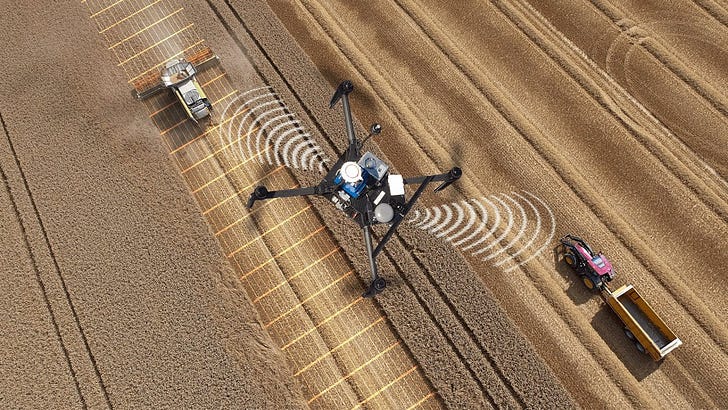LiDAR Miniaturization Video and Optical Spiking Neuromorphic Photonics Research
Photonics Precision Technologies - All things Photonics and Optoelectronics Engineering
Yesterday I’ve participated in an online technology meeting organized by OPTICA about LiDAR miniaturization. OPTICA is a leading organization on optical and photonics sciences and technologies, a leading research publisher on these topics and organizes conferences and meetings, mainly about research and development on Optics/Photonics. But it also organizes some specific technologies or business developments meetings.
The case of this meeting was precisely about a specific technology - LiDAR (Light, Detection and Ranging ). This technology is one of the most exciting developments in optics and photonics of our time, being leveraged by excitement about application in self-driving vehicles, in drones or in some satellite space imaging applications. It, as such, has attracted broad interest, from the entrepreneurial acumen of some technologists, all the way into the start-up investment broader audience. In the video I share here below we can listen and watch the presentations from some of the main companies already developing cutting-edge LiDAR solutions, but also from some entering - or trying to develop further - into this field. It is insightful from a professional training perspective, as followers should then try and understand better these developments, do their own due diligence in acquiring deeper knowledge of the technolgy or these companies. As the post is in the free Photonics Precision Technologies publication, that is its main focused intention.
In this edition we are also going to click and hopefuly (the reader obvioulsy, as I have alreayd done it) read the full research paper on a development which is both intriguing and exciting at the same time: the possibility of Photonics technologies currently developed for semiconductor platforms in so-called PICs (photonic integrated circuits) being applied in Neuromorphic hardware computing platforms, giving rise to what may be named Neuromorphic Photonics. This is exciting because there is promise of enhanced speed-up of current neuromorphic hardware architectures by substituting their electronic layouts by new Photonics layouts. Not only that, but photonics also promises to be more energy-efficient as compared with electronic integrated circuits. The research paper I share here describes research borrowed from neuroscience-based biological spiking neural networks, but where the activation agent spiking an artificial synapse is a laser diode operating a non-resonance pumping of a microvity of excitons-polaritons yielding spikes in the small nanoseconds range. Fascinating to read through, guaranteed.
Optica Online Industry Meeting: LIDAR 2.0 Miniaturization
Where is the future of LiDAR? Demanding end-users will describe what they are looking for from the supply chain of laser manufacturers, detector and imaging-processing specialists, optics, electronics, scanners and packaging experts.
Source: OPTICA YouTube Channel
Research readings: Leaky Integrate-and-Fire Mechanism in Exciton–Polariton Condensates for Photonic Spiking Neurons (Wiley Online Library)
ABSTRACT: This paper introduces a new approach to neuromorphic photonics in which microcavities exhibiting strong exciton–photon interaction may serve as building blocks of optical spiking neurons. The experimental results demonstrate the intrinsic property of exciton–polaritons to resemble the Leaky Integrate-and-Fire (LIF) spiking mechanism. It is shown that exciton–polariton microcavities when non-resonantly pumped with a pulsed laser exhibit leaky integration due to relaxation of the excitonic reservoir, threshold-and-fire mechanism due to transition to Bose–Einstein Condensate (BEC), and resetting due to stimulated emission of photons. These effects, evidenced in photoluminescence characteristics, arise within sub-ns timescales. The presented approach provides means for ultrafast processing of spike-like laser pulses with energy efficiency at the level below 1 pJ per spike.

(…)
The photon–exciton interaction leads to the creation of new eigenstates—upper and lower polaritons. Particularly, the polariton dispersion relation (the relation between polariton energy and in-plane momentum) takes the form of characteristic quasi-paraboloids and can be fully reproduced in the angular distribution of the microcavity far-field emission, as shown in Figure 1c.[51] These states can be efficiently populated by particles through non-resonant laser pumping. Photo-excited free carriers, electrons and holes, relax through phonon scatterings, creating a source of incoherent excitons in the form of the excitonic reservoir. The reservoir serves as the source of excitons which may continuously refill the lower polariton states of the system driving the radiative relaxation of polaritons.
(…)
Main Conclusions
Our experimental results confirm that in the regime of pulsed non-resonant excitation of exciton–polaritons, the semiconductor microcavities reproduce the most fundamental spiking neuron functionalities imposed by the LIF model. By combining the effects of (i) potential-like build-up and (ii) leaky-integration due to generation of the excitonic reservoir and polariton accumulation, (iii) thresholding due to BEC, (vi) subsequent pulse emission due to rapid relaxation of the BEC, and (v) resetting due to reservoir depletion, it is possible to develop an optical analog of LIF neuron capable of processing asynchronous spikes represented by picosecond laser pulses. Importantly, due to sub-ns times scales of adapted physical phenomena, our approach provides means for ultrafast processing capabilities with a very low single spiking operation cost at the level below 1 pJ per spike in comparison to LIF electronic realizations operating at megahertz regimes with tens of pJ per spike. (…)



